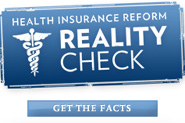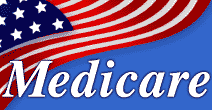|
|
|
 |
|
|
U.S.
Society > Health Care |
|
The
United States has evolved a mixed system of private and public responsibility
for health care. The vast majority of Americans pay some portion of
their medical bills through insurance obtained at work. About five out
of six American workers, along with their families, are covered by group
health insurance plans, paid for either jointly by the employer and
employee or by the employee alone. Under the most common type of plan,
the employee pays a monthly premium, or fee. In return, the insurance
company pays a percentage of the employee's medical costs above a small
amount known as a deductible. Insurance plans vary considerably. Some
include coverage for dental work and others for mental health counseling
and therapy; others do not. Although most Americans have some form of private health insurance, some people cannot afford insurance. They can get medical coverage through two social programs established in 1965. Medicaid is a joint federal-state program that funds medical care for the poor. The requirements for receiving Medicaid and the scope of care available vary widely from state to state. At a cost of $194.7 billion in the year 2000, Medicaid is the nation's largest social-welfare program. Medicare, another form of federal health insurance, pays a large part of the medical bills incurred by Americans who are 65 and older or who are disabled, regardless of age. Medicare is financed by a portion of the Social Security tax, by premiums paid by recipients, and by federal funds. Everyone who receives Social Security payments is covered by Medicare.
One of the most troubling health care problems facing the
United States has been providing care for those who cannot afford health
insurance and who are not eligible for either Medicaid or Medicare.
It has been estimated that one in seven Americans is without health
insurance at least part of the year. They may be persons who are unemployed
or have jobs without medical coverage or who live just above the poverty
line. They can go to public hospitals, where they will get treatment
in an emergency, but they often fail to obtain routine care that might
prevent illness. After widespread discussion and debate across the country
and at all levels of the citizenry, in 1996 Congress passed legislation
designed to make health insurance more available to working families
and their children. The law expanded access to health insurance for
workers who lose their jobs or who apply for insurance with a pre-existing
medical condition, and it sets up a pilot program of tax-deferred savings
accounts for use in paying medical bills. |
||||||
| Health Care Reform 2010 | ||||||
| The
Patient
Protection and Affordable Care Act was passed by Congress and signed
into law by the President March 23, 2010. (Full text of Public Law No: 111-148) |
||||||
| •
HealthCare,gov |
||||||
|
||||||
| Texts
are abridged from U.S. State Department IIP
publications and other U.S. government materials. |
||||||
DISCLAIMER
Any reference obtained from this server to a specific commercial product, process, or service does not constitute or imply an endorsement by the United States Government of the product, process, or service, or its producer or provider. The views and opinions expressed in any referenced document do not necessarily state or reflect those of the United States Government. |
 U.S. Diplomatic Mission to Germany /Public Affairs/ Information Resource Centers Updated: October 2010 |


